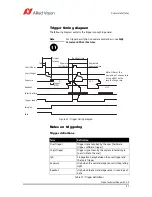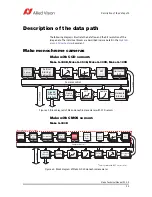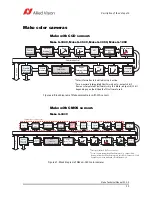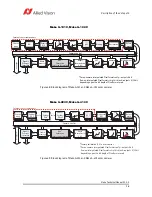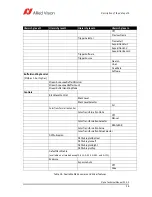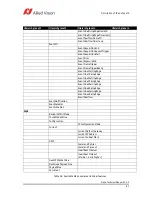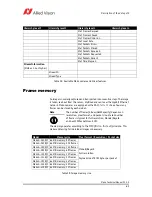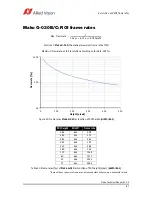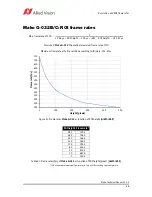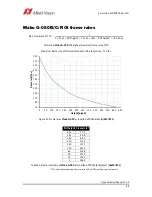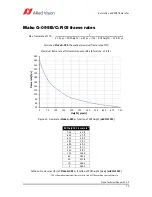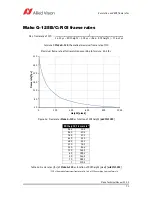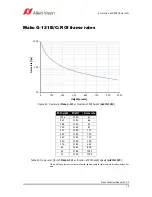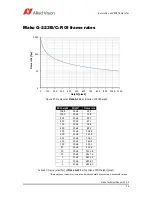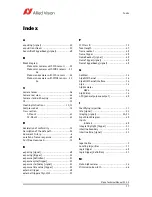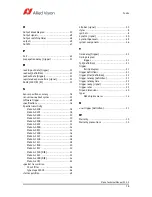
Mako Technical Manual V3.0.0
65
Description of the data path
Frame memory
An image is normally captured and transported in consecutive steps. The image
is taken, read out from the sensor, digitized and sent over the Gigabit Ethernet
network. Mako cameras are equipped with a RAM.
Table 29
shows how many
frames can be stored by each model.
The memory operates according to the FIFO (first in, first out) principle. This
makes addressing for individual images unnecessary.
Stat Frames Rescued
Stat Frames Shoved
Stat Frames Underrun
Stat Local Rate
Stat Packets Errors
Stat Packets Missed
Stat Packets Received
Stat Packets Requested
Stat Packets Resent
Stat Time Elapsed
StreamInformation
(Vimba v1.3 or higher)
StreamID
StreamType
Note
The number of frames (StreamHoldCapacity) depends on
resolution, pixel format, and packet size. Stated number
of frames is typical for full resolution, Mono8/Bayer8,
and GevSCPSPacketSize = 8192.
Model
Memory size
Pixel format / Resolution / Packet size
Mako G-030B/C 64 MB memory: 99 frames
Mono8/Bayer8
Full resolution
Payload size of 8192 bytes per packet
Mako G-032B/C 64 MB memory: 202 frames
Mako G-050B/C 64 MB memory: 130 frames
Mako G-095B/C 64 MB memory: 69 frames
Mako G-125B/C 64 MB memory: 52 frames
Mako G-131B/C 64 MB memory: 50 frames
Mako G-192B/C 64 MB memory: 34 frames
Mako G-223B/C 64 MB memory: 29 frames
Mako G-419B/C 64 MB memory: 15 frames
Table 29: Image memory size
Hierarchy level 1
Hierarchy level 2
Hierarchy level 3
Hierarchy level 4
Table 28: Available Mako camera and driver features

